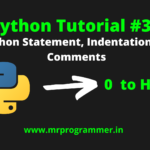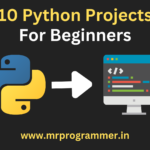Imagine diving into a huge dataset to find insights that will help you transform your business or research. It feels daunting right? here comes the use of tools that will help you with the task and make it easier to perform. For that, we use Python, the king of programming languages, With the help of Data Science and Python’s libraries we can easily perform data manipulation, analysis, and visualization not only possible but even faster. In this post, we’ll explore the Best Python Libraries for Data Science that every Data Scientist should know and turn complex tasks into manageable ones.
Table of Contents
10 Best Python Libraries for Data Science
Here are the 10 Best Python Libraries for Data Science, One should know about in 2024, they are as follows:
1. NumPy

Overview of NumPy:
NumPy, the abbreviation for Numerical Python, is a fundamental library for numerical computing in Python. It helps with big, complex arrays and matrices, and offers a set of math functions for easy operations on them.
Why NumPy is Important In Data Science
NumPy is important in data science due to its efficient handling of numerical data and its capability to perform complex mathematical computations. It serves as the foundation for many other libraries in the Python data science ecosystem, such as Pandas, SciPy, and Scikit-learn.
Key Features
N-dimensional Array Object
NumPy’s primary feature is the n-dimensional array object or ndarray. This array provides a fast and flexible way to store and manipulate large datasets. Unlike Python lists, NumPy arrays are more compact and allow for efficient computation.
Mathematical Functions
NumPy includes an extensive library of mathematical functions to perform operations such as trigonometric, statistical, and algebraic computations. These functions are optimized for performance and can operate on entire arrays without the need for extensive loops.
Broadcasting
Broadcasting is a powerful feature in NumPy that allows arithmetic operations to be performed on arrays of different shapes. This capability simplifies coding by eliminating the need for extensive loops and ensuring that operations are performed element-wise.
Integration with C/C++ and Fortran Code
NumPy provides tools for integrating C/C++ and Fortran code, making it possible to leverage high-performance code written in these languages. This integration is crucial for performance-critical applications and allows data scientists to take advantage of existing codebases.
Use Cases
Handling Large Datasets
NumPy is particularly great at handling large datasets due to its efficient memory usage and fast array operations. It is often used to load, manipulate, and analyze large datasets in a variety of scientific and engineering fields.
Performing Mathematical Operations
NumPy’s extensive set of functions makes it an ideal tool for performing complex mathematical operations. Whether it’s linear algebra, random number generation, or statistical analysis, NumPy provides the tools needed to perform these tasks efficiently.
2. Pandas
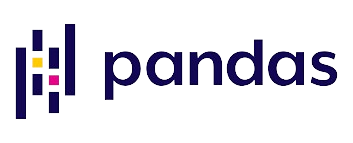
Overview of Pandas:
Pandas is a highly popular open-source data analysis and manipulation library for Python. Built on top of NumPy, it provides data structures and functions needed to work with structured data smoothly. Pandas are particularly known for their ability to handle large amounts of data quickly and efficiently.
Why Pandas is Important In Data Manipulation and Analysis
Pandas is crucial for data manipulation and analysis due to its robust and flexible data structures. It simplifies the process of cleaning, preparing, and transforming data, making it easier to analyze and gain insights. Its capabilities are essential for any data science workflow.
Key Features
DataFrame Object for Data Manipulation
The DataFrame is the core data structure in Pandas, similar to a table in a database or an Excel spreadsheet. It allows for powerful and efficient data manipulation, providing easy access to rows and columns and enabling complex operations with minimal code.
Tools for Reading and Writing Data
Pandas offers complete tools for reading from and writing various data formats, including CSV, Excel, SQL databases, and more. This functionality makes it easy to import data from different sources and export processed data in the required format.
Data Alignment and Handling of Missing Data
Pandas excels in handling missing data, which is common in real-world datasets. It provides built-in methods for detecting, filling, or dropping missing values. Additionally, Pandas ensures data alignment. automatically aligning data based on labels in different DataFrames, facilitating operations like joins and merges.
Use Cases
Data cleaning and Preparation
Pandas is widely used for cleaning and preparing data for analysis. It offers functions to handle missing data, remove duplicates, filter rows and columns, and convert data types. These capabilities help ensure that the data is in the best possible shape for analysis.
Data Wrangling and Transformation
Pandas makes data wrangling and transformation straightforward with its powerful indexing, filtering, and grouping capabilities. Data scientists can easily reshape data, collect values, and apply complex transformations to datasets, enabling them to extract meaningful insights efficiently.
3. Matplotlib

Overview of Matplotlib
Matplotlib is a widely used plotting library for Python, designed to create static, interactive, and animated visualizations. It provides an extensive range of plotting capabilities and is highly customizable, making it a powerful tool for visualizing data.
Why Matplotlib is Important In Data Visualization
Data visualization is crucial in data science as it allows for the in-built understanding of complex data. Matplotlib plays a vital role by enabling data scientists to create clear and informative visual representations of their data, which can help in identifying patterns, trends, and others.
Key Features
Plotting of Various Graphs
Matplotlib supports a wide array of graph types, including line plots, bar charts, scatter plots, histograms, pie charts, and more. This versatility makes it suitable for visualizing different kinds of data and for various analytical purposes.
Customizing Options for Plots
One of the strengths of Matplotlib is its extensive customization options. Users can tweak almost every aspect of their plots, from colors and fonts to line styles and makers. This flexibility ensures that visualizations can be customized to specific needs and preferences.
Integration with Other Libraries
Matplotlib integrates smoothly with other Python libraries, such as NumPy, Pandas, and SciPy. This integration allows for the easy plotting of data stored in these libraries’ data structures and enhances the overall data analysis workflow.
Use Cases
Visualizing Data for Analysis
Matplotlib is frequently used for visualizing data during the analysis phase. By creating plots and charts, data scientists can explore their data more effectively, identify trends, and make data-driven decisions.
Creating Static, Interactive, and Animated Visualizations
Matplotlib can generate static visualizations suitable for reports and publications as well as interactive plots that can be embedded in web applications. Additionally, it supports animated plots, which can be useful for visualizing changes in data over time or for presentations.
4. Seaborn
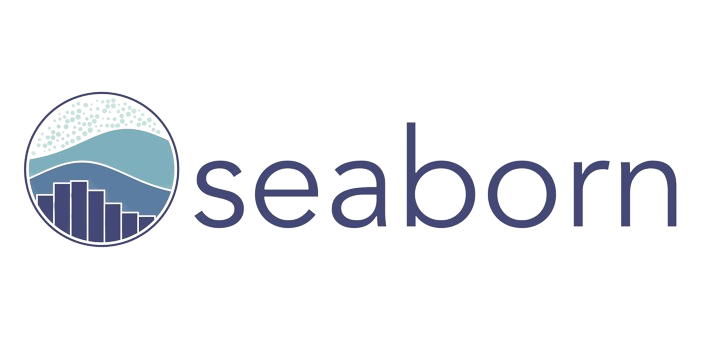
Overview Of Seaborn
Seaborn is a powerful and user-friendly Python library for data visualization, designed to make it easier to create aesthetically pleasing and informative statistical graphics. It simplifies the process of creating complex visualizations by providing a high-level interface for drawing a variety of plots.
Built on Top of Matplotlib
Seaborn is built on top of Matplotlib, inheriting its flexibility while offering additional features and simplified syntax. This combination allows users to create advanced visualizations with less code and effort.
Key Features
High-Level Interface for Drawing Attractive and Informative Statistical Graphics
Seaborn’s high-level interface makes it straightforward to create complex and beautiful statistical plots. It abstracts much of the complexity of Matplotlib, providing users with a simpler and more automatic way to create visualizations.
Built-in Themes for Styling
Seaborn includes built-in themes and color palettes that help produce visually appealing plots. These themes ensure that plots are not only informative but also stunning, enhancing the overall presentation of data.
Functions to Visualize Univariate and Bivariate Distributions
Seaborn offers specialized functions to visualize Univariate and bivariate distributions, such as histograms, kernel density plots, box plots, and violin plots. These functions help in understanding the distribution and relationships within the data.
Use Cases
Statistical Data Visualization
Seaborn is particularly useful for statistical data visualization. It provides tools to create detailed and informative plots that can highlight statistical relationships and trends in the data, aiding in better analysis and interpretation.
Creating Stunning Plots
One of Seaborn’s key strengths is its ability to create plots that are both informative and visually appealing. Its built-in themes and color palettes, combined with its high-level plotting functions, make it easy to produce professional-quality visualizations that are suitable for presentations, reports, and publications.
5. SciPy

Overview Of SciPy
SciPy is an open-source Python library designed for scientific and technical computing purposes. It builds on the capabilities of NumPy by adding a collection of algorithms and high-level commands for manipulating and visualizing data.
Why SciPy is Important In Scientific Computing
SciPy is important for scientific computing due to its comprehensive range of mathematical, scientific, and engineering functions. It is widely used in both academic research and industry for solving complex mathematical problems and performing scientific analyses.
Key Features
Modules for Optimization, Integration, Interpolation, Eigenvalue Problems, and Further Applications
SciPy includes a variety of modules that cover numerous scientific computing tasks. These modules offer functions for optimization (finding minima and maxima), numerical integration (calculating integrals), interpolation (estimating values between points), eigenvalue problems (solving for eigenvalues and eigenvectors), and more. This broad functionality makes SciPy a versatile tool for many applications.
Built on NumPy
SciPy is built on top of NumPy, inheriting its efficient array operations and numerical capabilities. This foundation allows SciPy to handle large datasets and perform computations quickly and effectively.
Extensively Used In Academic and Commercial Projects
SciPy is extensively utilized in both academic research and commercial projects. Its robust and reliable functions make it a preferred choice for scientists, engineers, and analysts working on complex computational problems.
Use Cases
Solving Complex Mathematical Problems
SciPy is particularly effective at solving complex mathematical problems. Its optimization, integration, and differential equation solvers are used in various scientific fields to tackle challenges that require advanced mathematical solutions.
Performing Scientific and Technical Computations
SciPy is widely employed for performing scientific and technical computations. Its comprehensive collection of tools allows users to conduct simulations, perform data analysis, and model physical systems, making it indispensable for scientific research and engineering applications.
6. Scikit-learn
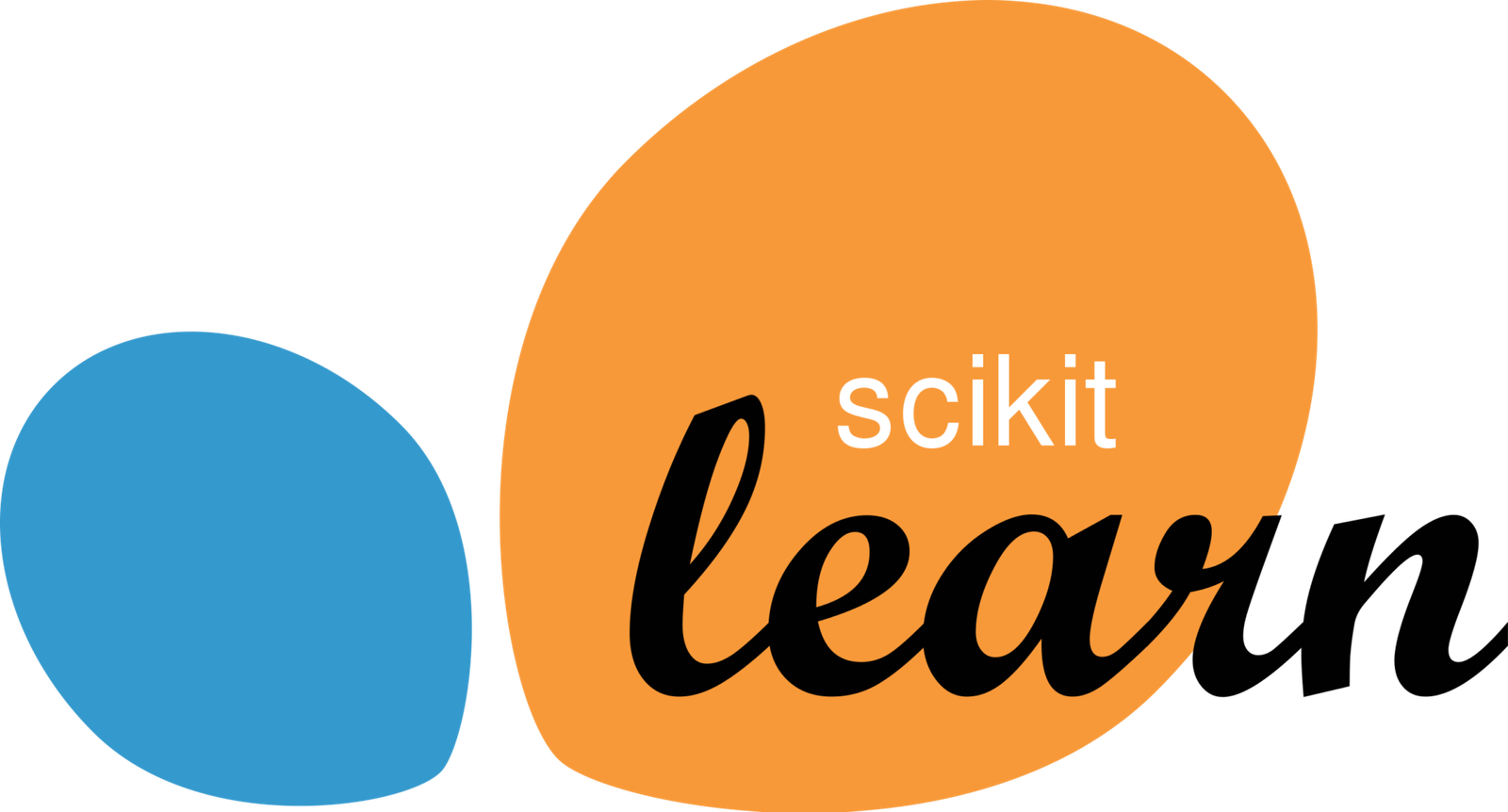
Overview of Scikit-learn
Scikit-learn is a widely used open-source Python library that provides simple and efficient tools for data mining and data analysis. It is built on NumPy, SciPy, and Matplotlib, it offers a rich collection of algorithms and utilities for machine learning and statistical modeling.
Why Scikit-learn is Important In Machine Learning
Scikit-learn is essential in machine learning due to its comprehensive range of algorithms and easy-to-use interface. It allows data scientists and machine learning practitioners to quickly prototype, build, and evaluate models, making it a fundamental tool in the machine learning workflow.
Key Features
Simple and Efficient Tools for Data Mining and Data Analysis
Scikit-learn offers a variety of tools for data processing, feature selection, and data transformation. These tools help streamline the process of preparing data for machine learning tasks, ensuring that models are built on high-quality, relevant data.
Machine Learning Algorithms for Classification, Regression, Clustering and More
Scikit-learn includes a wide range of machine learning algorithms, such as:
- Classification: Support Vector Machines (SVM), k-Nearest Neighbors (k-NN), Random Forest, etc.
- Regression: Linear Regression, Ridge Regression, Lasso, etc.
- Clustering: k-means, Hierarchical Clustering, DBSCAN, etc. This variety enables users to tackle different types of machine learning problems effectively.
Tools for Model Selection and Evaluation
Scikit-learn provides robust tools for model selection and evaluation, including:
- Cross-validation: Techniques to assess the generalizability of models.
- Grid Search and Random Search: Methods to find the best hyperparameters for models.
- Metrics: Functions to evaluate the performance of classification, regression, and clustering models.
Use Cases
Building and Training Machine Learning Models
Scikit-learn is extensively used to build and train machine learning models. Its consistent API and extensive documentation make it easy for users to implement and compare different models quickly. Users can experiment with various algorithms and hyperparameters to optimize model performance.
Performing Predictive Data Analysis
Scikit-learn is a go-to library for performing predictive data analysis. Whether predicting customer behavior, forecasting sales, or detecting anomalies, Scikit-learn’s algorithms and tools enable the development of accurate and reliable predictive models.
7. TensorFlow
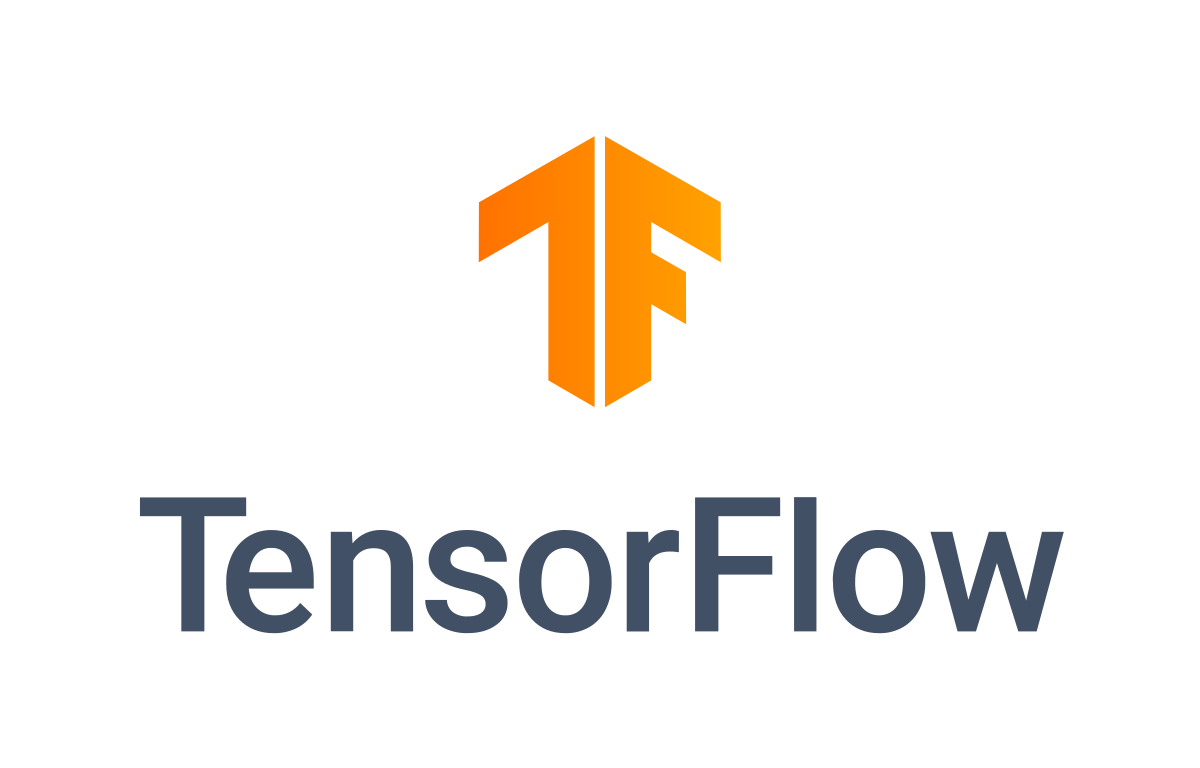
Overview of Tensorflow
TensorFlow is an end-to-end open-source platform for machine learning developed by the Google Brain Team. It provides a comprehensive ecosystem of tools, libraries, and community resources that support the development and deployment of machine learning models.
Developed by Google Brain Team
The development of TensorFlow by the Google Brain Team ensures that it is a robust, scalable, and production-ready framework. It is widely used in both research and industry for building and deploying machine learning and deep learning models.
Key Features
End-to-end Open-source Platform for Machine Learning
TensorFlow offers an end-to-end platform that surrounds all stages of machine learning development, from data preprocessing and model building to deployment and monitoring. Its extensive library supports a wide range of machine learning tasks and provides tools for efficient model training and optimization.
Flexible Architecture for Easy Deployment Across Various Platforms
Tensorflow’s flexible architecture allows for easy deployment across various platforms, including CPUs, GPUs, TPUs, mobile devices, and edge devices. This flexibility makes it suitable for different applications and environments, ensuring that models can be deployed wherever they are needed.
TensorFlow.js and TensorFlow Lite for Mobile and Web Applications
TensorFlow extends its capabilities to mobile and web applications through TensorFlow.js and TensorFlow Lite:
- TensorFlow.js: Enables the training and deployment of machine learning models in JavaScript environments, such as web browsers and Node.js.
- TensorFlow Lite: Optimized for mobile and edge devices, allowing the deployment of lightweight and efficient models on Android iOS, and embedded systems.
Use Cases
Deep Learning and Neural Networks
TensorFlow is extensively used for developing deep learning and neural network models. Its high-level Keras API simplifies the creation and training of neural networks, while its lower-level operations provide fine-grained control for more complex architectures. TensorFlow is ideal for tasks such as image and speech recognition, natural language processing, and generative models.
Developing and Deploying Machine Learning Models
TensorFlow is a comprehensive tool for developing and deploying machine learning models in production. Its ecosystem includes TensorFlow Serving for scalable deployment, TensorFlow Extended (TFX) for end-to-end ML pipelines, and TensorFlow Hub for sharing and reusing pre-trained models. These tools enable efficient model development, testing, and deployment, testing, and deployment, making TensorFlow suitable for a wide range of real-world applications.
8. Keras

Overview of Keras
Keras is a high-level neural networks API designed to ease the development and experimentation of deep learning models. It offers a user-friendly interface for building and training neural networks and runs on top of lower-level frameworks like TensorFlow, Theano, Microsoft Cognitive Toolkit (CNTK).
Key Features
User-friendly and Modular
Keras is known for its user-friendly and modular design. Its built-in syntax and straightforward functions allow for the rapid creation and testing of neural networks.
Supports Both CPU and GPU
Keras supports both CPU and GPT computation, making it versatile and scalable. GPU acceleration is crucial for training large models and handling big datasets, significantly reducing training times and enhancing performance.
Runs on Top of TensorFlow, Theano, or CNTK
Keras abstracts the complexities of lower-level libraries like TensorFlow, Theano, and CNTK, providing a high-level interface for defining and training models. This flexibility allows users network to switch between different backends depending on their specific needs and resources.
Use Cases
Prototyping and Experimenting with Deep Learning Models
Keras is ideal for prototyping and experimenting with deep learning models due to its simplicity and flexibility. Researchers and developers can quickly test new ideas, iterate on model designs, and refine their architectures without dealing with the complexities of lower-level libraries.
Rapid Development of Neural Networks
Keras enables the rapid development of neural networks, making it suitable for both beginners and experienced practitioners. Its high-level API allows users to build, compile, and train models with minimal code, accelerating the development process and reducing time to deployment.
9. Plotly
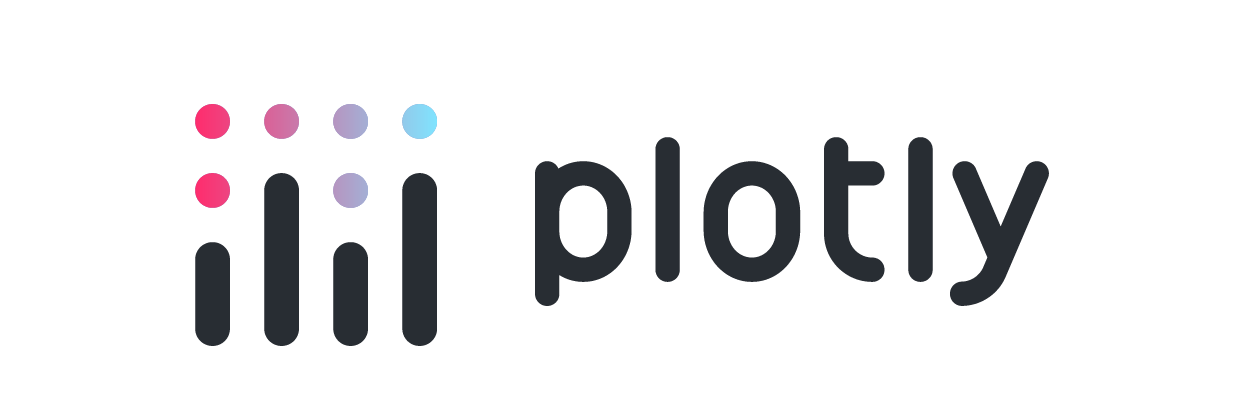
Overview Of Plotly
Plotly is a comprehensive and versatile interactive graphing library for Python. It is designed to create high-quality, interactive visualizations that can be easily embedded in web applications and Jupyter notebooks. Plotly supports a wide range of plots, including statistical, geographical, and 3D visualizations.
Importance in Interactive Data Visualization
Interactive data visualization is crucial for exploring complex datasets and communicating insights effectively. Plotly stands out in this domain by offering tools that enable users to create dynamic and engaging visualizations, which can be manipulated and explored directly within the browser.
Key Features
Interactive Graphing Library
Plotly allows for the creation of interactive graphs that enables users to hover, click, zoom, and pan. This interactivity enhances the user’s ability to explore and understand the data, making it a powerful tool for data analysis and presentation.
Integration with Jupyter Notebooks and Web Applications
Plotly seamlessly combines with Jupyter notebooks, making it a perfect option for data scientists and researchers who operate in these settings. It also supports integration with web applications through frameworks like Dash, allowing for the development of interactive dashboard and data applications.
Supports a Wide Range of Plots
Plotly supports a diverse range of plot types, which include:
- Basic Plots: Line charts, bar charts, scatter plots, pie charts.
- Statistical Plots: Box plots, histograms, violin plots.
- Geographical Plots: Maps, choropleth maps.
- 3D Plots: 3D scatter plots, surface plots.
This versatility ensures that Plotly can meet the visualization needs of various types of data and analysis.
Use Cases
Creating Interactive Dashboards and Visualizations
Plotly is extensively used for creating interactive dashboards that provide real-time insights and allow users to interact with the data in meaningful ways.
Data Exploration and Presentation
Plotly’s interactive features are particularly useful for data exploration, allowing analysts to get into data points, identify trends, and uncover insights. It also excels in data presentation, enabling the creation of compelling visual narratives that can be shared with stakeholders through web-based reports and applications.
10. Statsmodels

Overview of Statsmodels
Statsmodels is a Python library dedicated to statistical modelling and data analysis. It provides a comprehensive suite of tools for estimating, testing, and visualizing statistical models models. Statsmodels is built on top of NumPy, SciPy, and Matplotlib, ensuring smooth integration with other popular data science libraries.
Importance in Statistical Modelling
Statsmodels is essential for statistical modeling due to its robust capabilities for performing statistical tests, fitting statistical models, and conducting data analysis. It is widely used in academia and industry for rigorous statistical analysis and hypothesis testing.
Key Features
Tools for Estimating and Testing Statistical Model
Statsmodels offers a wide range of tools for estimating and testing statistical models, including:
- Regression Analysis: Linear regression, logistic regression, generalized linear models (GLMs).
- Time Series Analysis: ARIMA, SARIMA, VAR, state space models.
- Statistical Tests: T-tests, chi-square tests, ANOVA, etc.
These tools help users build and evaluate models to understand relationships within the data and make informed predictions.
Extensive List of Descriptive Statistics, Statistical Tests, and Plotting Functions
Statsmodels provides an extensive list of descriptive statistics and statistical tests, along with plotting functions to visualize data and model results. These include summary statistics, correlation measures, hypothesis tests, and diagnostic plots, enabling comprehensive data analysis and model validation.
Support for Linear Regression, Time Series Analysis, and More
Statsmodels supports a wide range of statistical models and analysis techniques, including:
- Linear Regression: Ordinary least squares (OLS), robust linear models, quantile regression.
- Time Series Analysis: ARIMA, seasonal decomposition of time series (STL).
- Survival Analysis: Kaplan-Meier estimation, Cox proportional hazards model. This broad support allows users to tackle diverse statistical challenges across different domains.
Use Cases
Performing Statistical Tests and Data Analysis
Statsmodels is widely used for performing statistical tests and data analysis. Researchers and analysts leverage its powerful statistical tests and descriptive statistics to validate hypotheses, explore data patterns, and derive insights from datasets.
Building and Evaluating Statistical Models
Statsmodels is an invaluable tool for building and evaluating statistical models. Its rich suite of modelling tools allows users to estimate model parameters, assess model fit, and perform diagnostic checks. This capability is crucial for developing reliable models that accurately capture the underlying data structure and provide meaningful predictions.
Conclusion
In conclusion, for data science, There’s a pool full of , Python’s rich ecosystem of libraries. These provides unparalleled support for every stage of the data analysis and modeling process. From NumPy’s powerful array operations to Scikit-learn’s comprehensive machine learning algorithms, each library bring unique strengths to the table. Matplotlib and Plotly enable insightful data visualizations, while TensorFlow and Keras simplify the development of deep learning models. Statsmodels offers robust tools for statistical analysis, making it easier to validate hypotheses and build reliable models. Together, these libraries empower data scientists to turn raw data into actionable insights, driving innovation and informed decision-making across diverse fields. In this post, we explored the top 10 best Python libraries for data science.
- I Tried ChromeOS Flex After Switching From Windows 10 - October 13, 2025
- Top 5 Business Skills Every Programmer Needs to Get Hired (2025 Guide) - August 27, 2025
- Intel’s Downfall? How a Silicon Titan Lost the Plot—and What Comes Next - August 26, 2025



